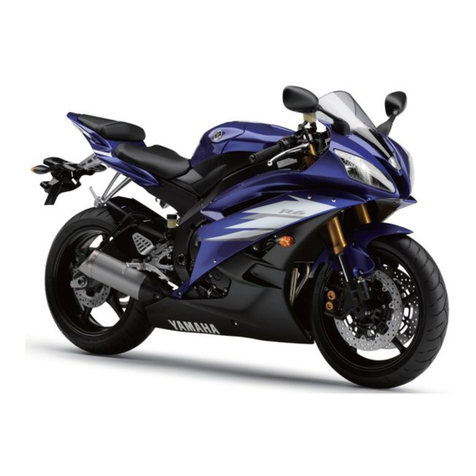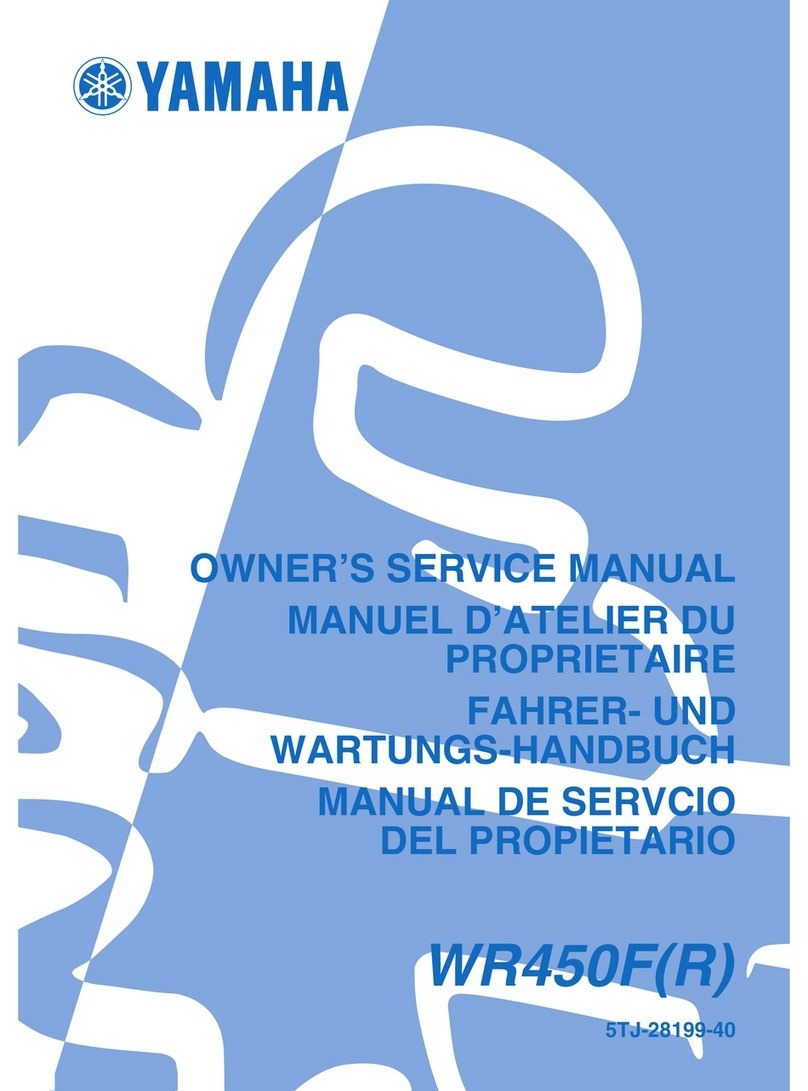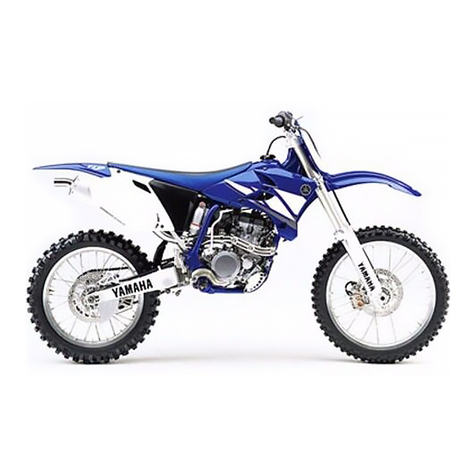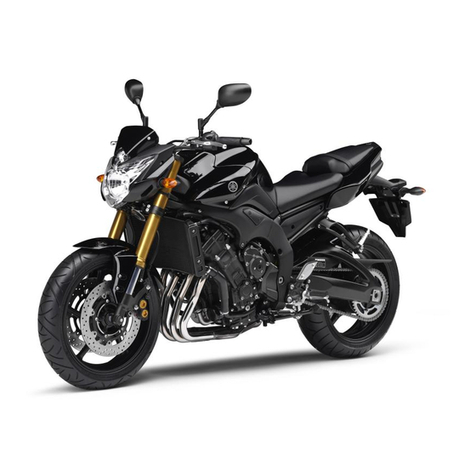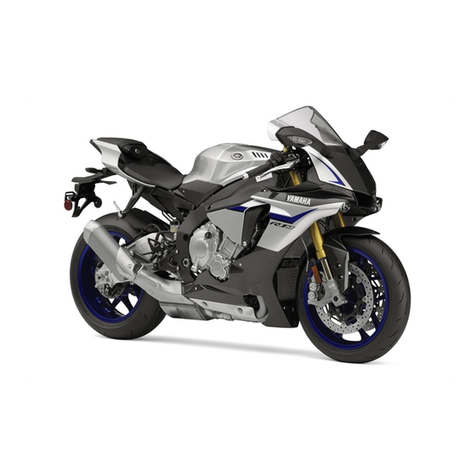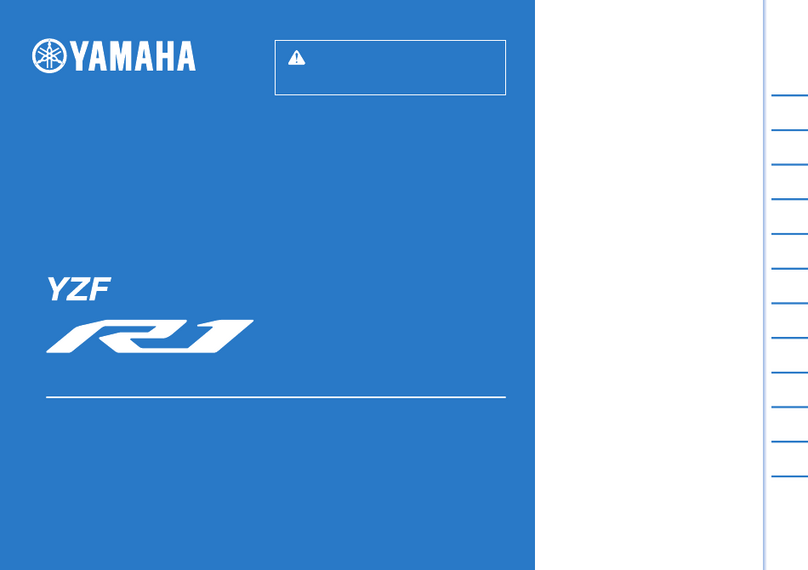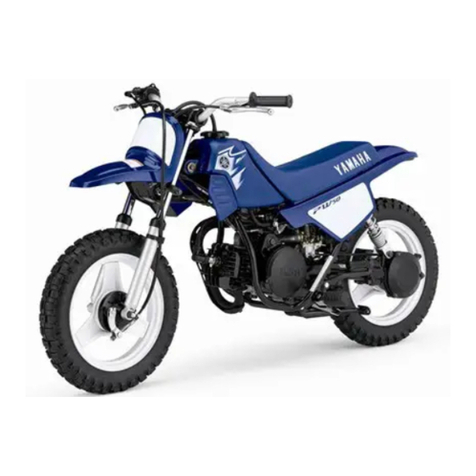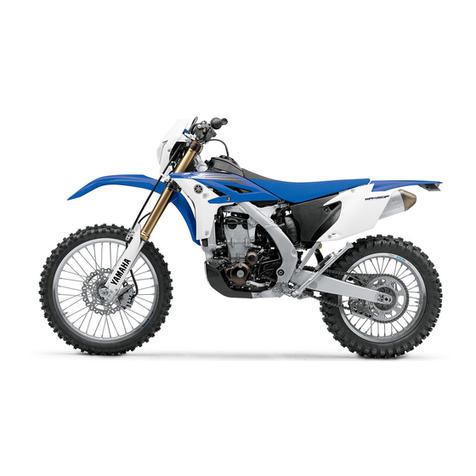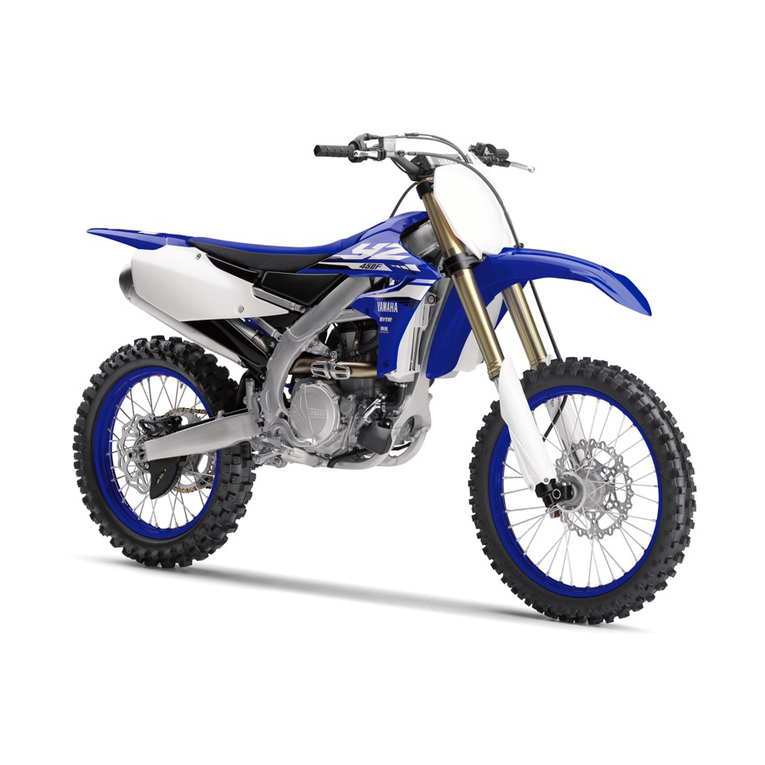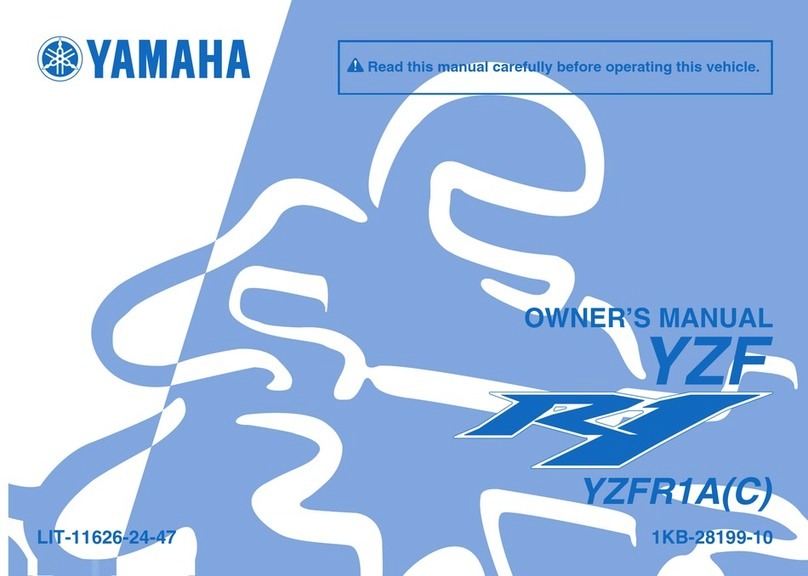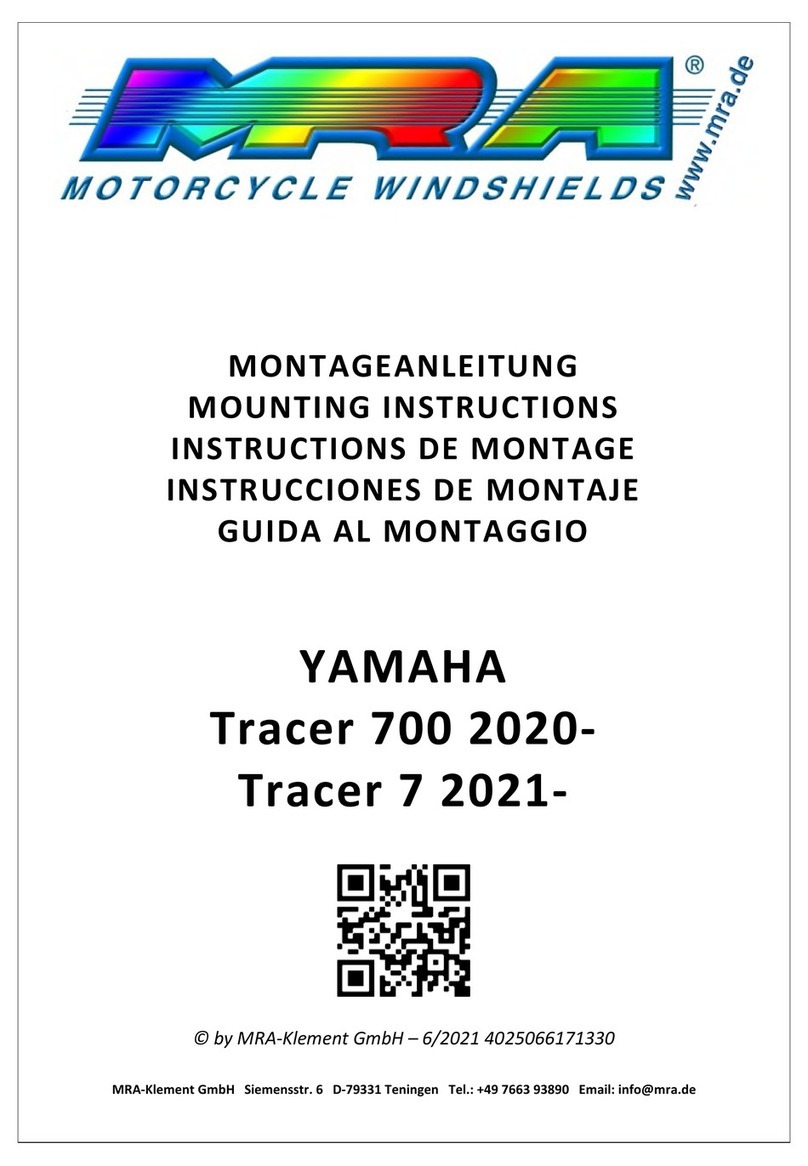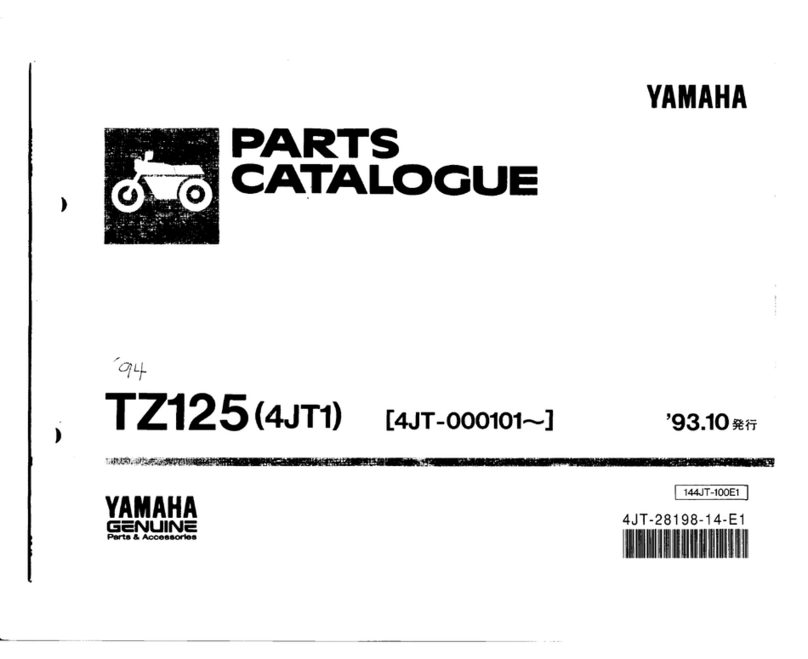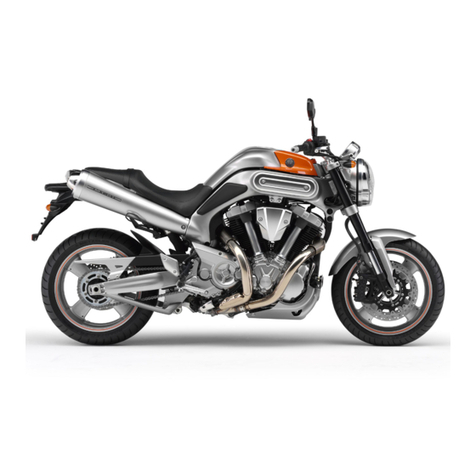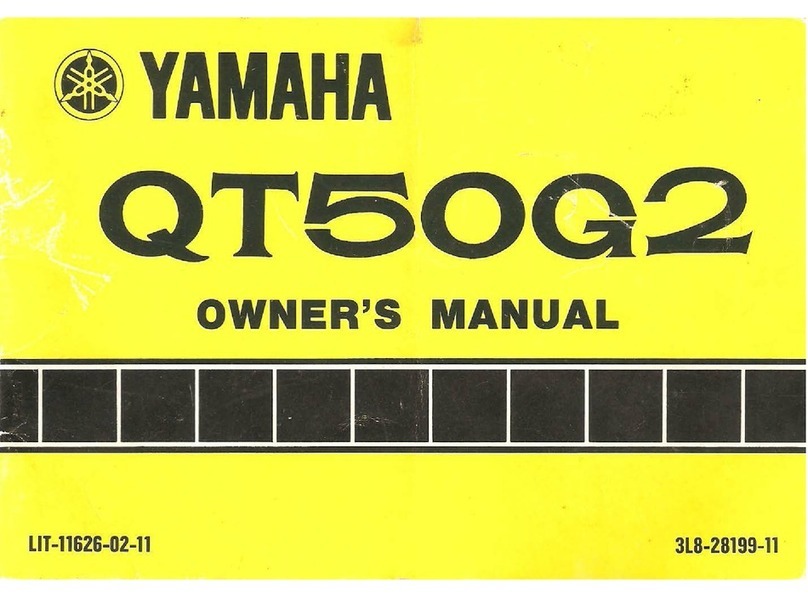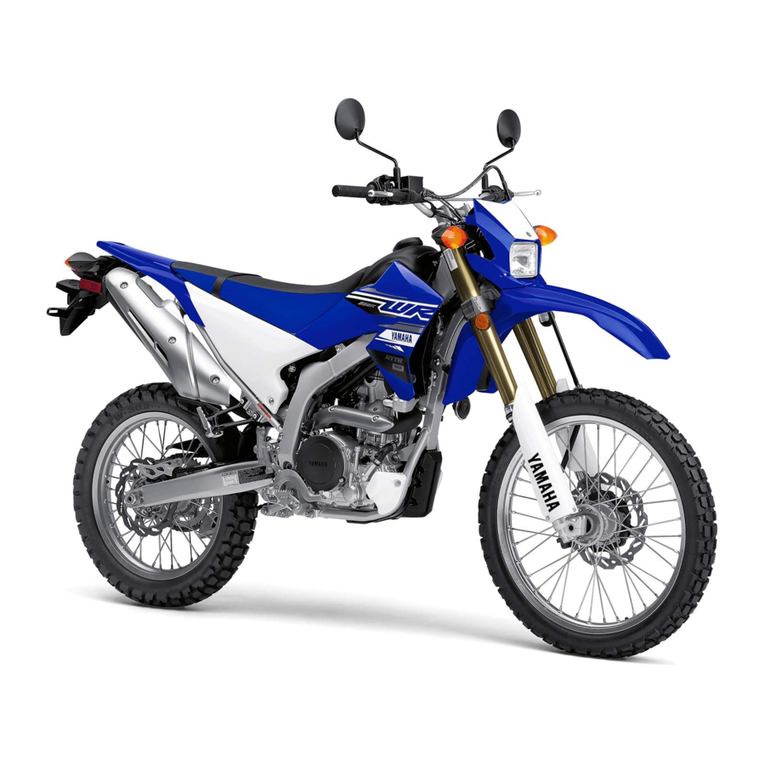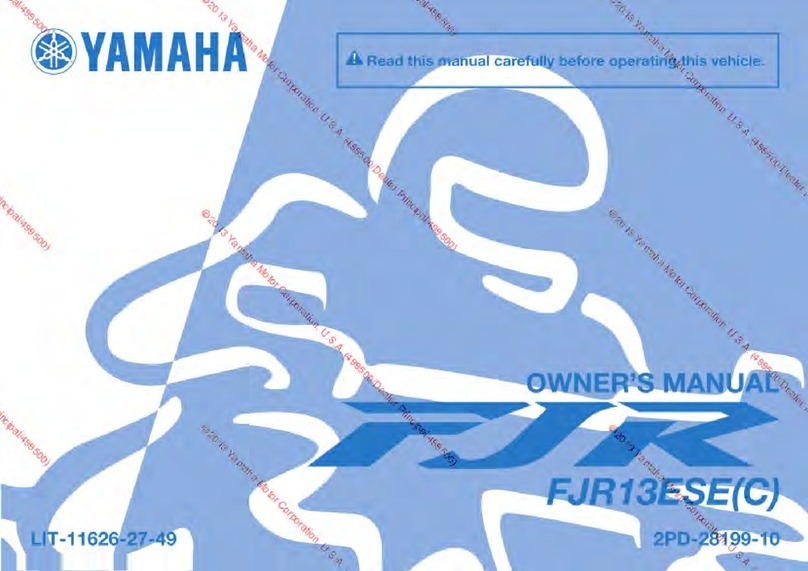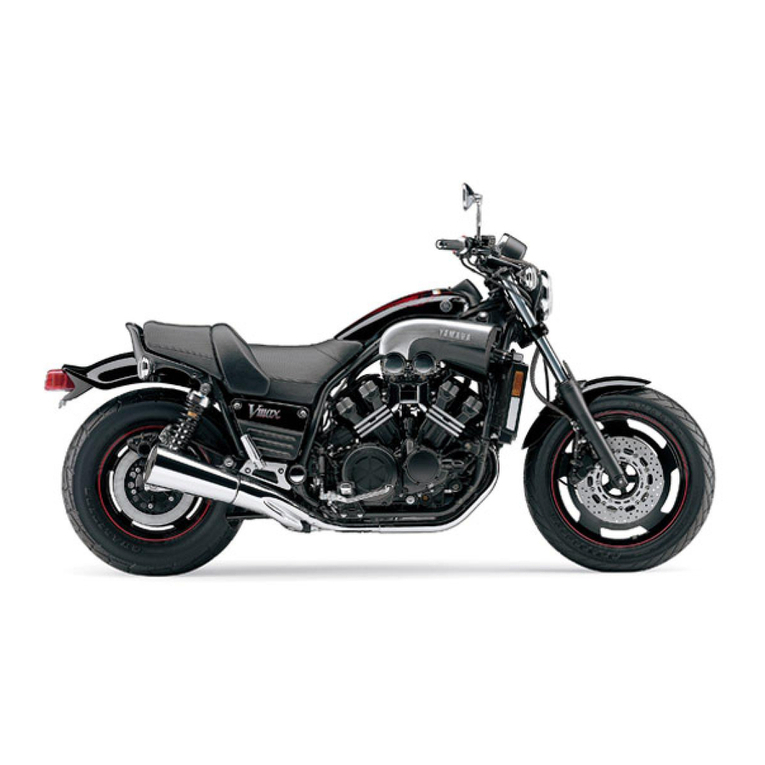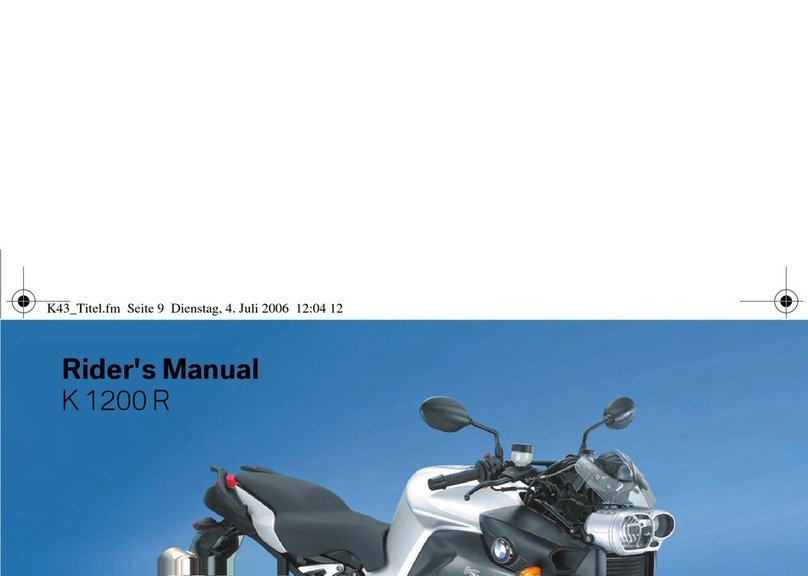
Table of contents
Location of important labels........... 1-1
Safety information............................ 2-1
Further safe-riding points ............... 2-5
Helmets .......................................... 2-6
Description ....................................... 3-1
Left view ......................................... 3-1
Right view....................................... 3-2
Controls and instruments ............... 3-3
Instrument and control functions... 4-1
Main switch/steering lock............... 4-3
Keyhole cover................................. 4-4
Indicator lights and warning
lights............................................ 4-5
Multi-function meter unit ................ 4-6
Handlebar switches...................... 4-11
Clutch lever .................................. 4-12
Shift pedal .................................... 4-12
Brake lever.................................... 4-12
Brake pedal .................................. 4-13
Fuel tank cap ................................ 4-13
Fuel............................................... 4-14
Catalytic converter ....................... 4-15
Seat ............................................. 4-16
Helmet holders ............................. 4-16
Storage compartment .................. 4-17
Sidestand ..................................... 4-17
Starting circuit cut-off system ...... 4-18
For your safety – pre-operation
checks ...............................................5-1
Operation and important riding
points .................................................6-1
Starting the engine..........................6-2
Shifting ............................................6-2
Tips for reducing fuel
consumption................................6-3
Engine break-in...............................6-3
Parking ............................................6-4
General note....................................6-5
Periodic maintenance and
adjustment ........................................7-1
Owner’s tool kit...............................7-1
Periodic maintenance chart for the
emission control system..............7-2
General maintenance and
lubrication chart...........................7-4
Removing and installing the
cowling and panels......................7-8
Checking the spark plug.................7-9
Engine oil and oil lter element .....7-11
Why Yamalube..............................7-13
Coolant..........................................7-14
Cleaning the air lter element .......7-15
Adjusting the engine idling
speed.........................................7-16
Adjusting the throttle grip
free play ..................................... 7-17
Valve clearance............................. 7-18
Tires .............................................. 7-18
Cast wheels .................................. 7-20
Adjusting the clutch lever
free play..................................... 7-20
Checking the brake lever
free play..................................... 7-21
Checking the shift pedal............... 7-22
Brake light switches ..................... 7-22
Checking the front and rear
brake pads ................................ 7-23
Checking the brake uid level ...... 7-23
Changing the brake uid ............. 7-25
Drive chain slack........................... 7-25
Cleaning and lubricating the
drive chain................................. 7-27
Checking and lubricating the
cables........................................ 7-27
Checking and lubricating the
throttle grip and cable ............... 7-27
Checking and lubricating the
brake and clutch levers............. 7-28
Checking and lubricating the
brake pedal ............................... 7-28
Checking and lubricating the
centerstand and sidestand........ 7-29
Lubricating the swingarm
pivots......................................... 7-29
Checking the front fork ................. 7-30
Checking the steering................... 7-30
Checking the wheel bearings ....... 7-31


